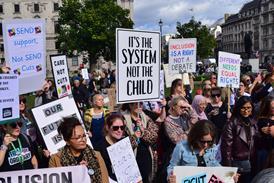Acting on race
I read with interest your recent article on the 'Race for Justice' (see [2002] Gazette, 23 May, 24) and I disagree with Arun Kundnani.
The problem is not the Crime and Disorder Act itself, but its application by the criminal justice agencies.
Contrary to his assertion that racial motivation has to be proved in racist offences, this is only in respect of section 28(b) of the act, which requires proof that the offence is motivated wholly or partly by hostility towards members of a racial group, based on their membership of that group.
Section 28(a), on the other hand, only requires the Crown to show that at the time of the offence, or immediately before or immediately afterwards the defendant demonstrated towards the victim, hostility based on the victim's membership or presumed membership, of a racial group.
This will always be a matter of evidence since hostility can only be inferred from the words or conduct of the defendant.
The two subsections are totally separate.
Therefore, if a prosecution is brought under section 28(a) there is no need to go down the route of proving racial motivation.
Rodney Warren, of the Criminal Law Solicitors Association, is also wrong about the impact of racism on a victim.
A recent Crown Prosecution Service (CPS) inspectorate report states 'not all prosecutors appear to understand the psychological impact of racism ...
some police, prosecutors and magistrates also take the view that the less serious forms of racist insults do not justify the "racially aggravated" tag.
Some judges have the same view of "mere vulgar abuse"'.
That message permeates back to the police.
who feel that racist incidents are being plea-bargained away.
A cut lip can heal in a few days; being called a nigger and told to go home, as happened to me a few years ago, takes a lot longer.
A final point on Mr Warren's interpretation of R v White [2001] 1 WLR 1352 - the defendant and the victim were not of the same race.
The victim was from Sierra Leone, the defendant was West Indian (although somewhat ingeniously suggested he regarded himself as African).
Quite properly his appeal against conviction was not allowed.
Commentators need to be careful before suggesting that racism cannot occur between two people of the same skin colour.
Racism can exist between African and West Indians, as witnessed by the tensions that arose when Africans moved into the Broadwater Farm estate in London.
The Crime and Disorder Act 1998 is intended to protect victims of racially aggravated offences, but to do so the courts, police and CPS need to apply it firmly.
Only then, in these particularly troubled times, will the message go out that racially aggravated offences will not be tolerated.
Leslie Chinweze, Crown prosecutor, Stratford, London


























No comments yet